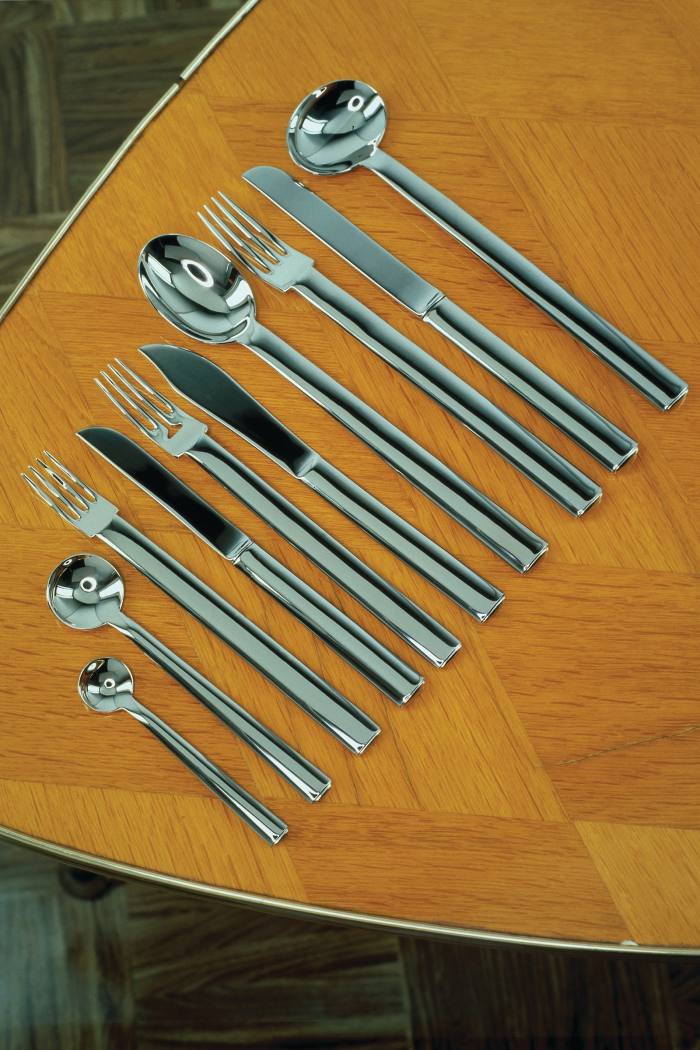In 2019, a silver spoon found in the Midlands caused something of a stir. With its decorative rectangular handle, the piece of cutlery was produced in c1910 Vienna by the Wiener Werkstätte – the influential arts and crafts studio founded in 1903 by architect Josef Hoffmann and designer Koloman Moser. Offered by Hansons Auctioneers in Staffordshire with an estimate of £800 to £1,200, it sold for £3,600.

“I bought it,” says specialist dealer Wolfgang Bauer, the owner of Galerie Bel Etage in Vienna. “Hoffmann created such single spoons in one-off designs as an objet d’art, and they are very rare. Normally, a piece like this sells for around €20,000.”


The Wiener Werkstätte was born out of the Vienna Secession – a group of avant-garde artists, designers and architects who banded together in 1897. Their cultural effect was radical. While Gustav Klimt was creating his era-defining paintings, Hoffmann and Moser set out to elevate the decorative arts.
“They put together excellent designers and excellent craftsmen,” says Bauer. “Silversmiths and goldsmiths, leatherworkers and cabinetmakers.” Its output spanned architecture, furniture and interior accessories, but also jewellery and later textiles and fashion in order to create a Gesamtkunstwerk – a “total work of art”.


“For sure, Wiener Werkstätte was the first lifestyle brand,” says Renée Price, director of the Neue Galerie in New York, home of the collection of the early-20th-century German and Austrian art and design amassed by Ronald Lauder (the son of Estée). “It was all about making your life as beautiful as possible – from a sardine fork or a coal bucket to the most expensive and extravagant things.”


Today, the world’s largest Wiener Werkstätte collection resides at Vienna’s MAK museum, which is currently showing an exhibition dedicated to Hoffmann. “He was really a universal designer in the same way that Philippe Starck is nowadays,” says co-curator Rainald Franz. “He started the modern idea of a designer being in charge of everything, from the glass you drink out of to whole buildings.”
The Wiener Werkstätte was also an aesthetic precursor to modernism. “People come to my shop and say, ‘Oh, it’s very nice art deco furniture you have’, but these designs pre-date art deco by 15 or 20 years,” says Bauer. “At the time it was too modern for many people. The geometric forms were an attack. They didn’t sell so well and the Wiener Werkstätte went bankrupt several times before closing in 1932.”



Modern simplicity is what gives these pieces contemporary appeal. “The early work, from 1903 to around 1908, is the most desirable,” says Bauer, adding that prices start at €100 for postcards. A very ornate silver vitrine by Carl Otto Czeschka was acquired by the Dallas Museum of Art in 2013 for an undisclosed sum. In between are Hoffmann’s shapely silver candlesticks; his iconic “Sitzmaschine” recliner (a version of which sold at Sotheby’s in 2020 for $11,340); and Prutscher’s delicate and colourful wine glasses (a trio fetched $22,500 at Christie’s last year). Pieces turn up in Viennese auction houses Im Kinsky and Dorotheum, as well as with London dealer Yves Macaux, who has a range of chairs and tables by both Moser and Hoffmann, and recently sold a decadent 1908 hanging lamp for a six-figure sum. In 2020, Christie’s New York sold a trio of c1906 Hoffmann light fixtures for $774,000. Marta De Roia, a specialist in its design department, adds: “Objects of this calibre are rarely traded at auction as many are in museum collections.”


Original collaborators such as glassmaker Lobmeyr and textile company Backhausen still manufacture Wiener Werkstätte wares – from Hoffmann’s monochrome Serie B drinking set to his Beehive fabric design, both available at the Neue Galerie shop. Newer brands also offer reissues: Alessi produces Hoffmann’s coolly modernist 1906 Rundes Modell cutlery (£599 for a 24-piece set) and Avenue Road’s re-editions include a 1907 dining chair for the Fledermaus cabaret (from C$3,100, about £1,890). In Vienna, WOKA reproduces Wiener Werkstätte lighting, and its designs can be seen in the richly layered interiors of Kelly Wearstler and Ken Fulk. Proof that Vienna’s artistic golden age is still the height of modern opulence.
Stay connected with us on social media platform for instant update click here to join our Twitter, & Facebook
We are now on Telegram. Click here to join our channel (@TechiUpdate) and stay updated with the latest Technology headlines.
For all the latest Art-Culture News Click Here
